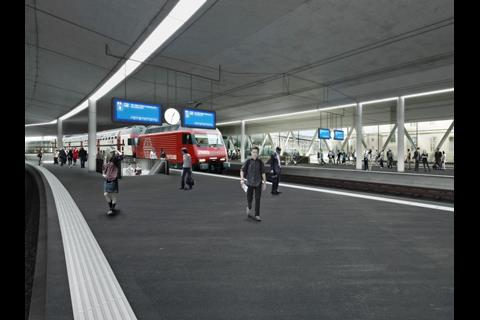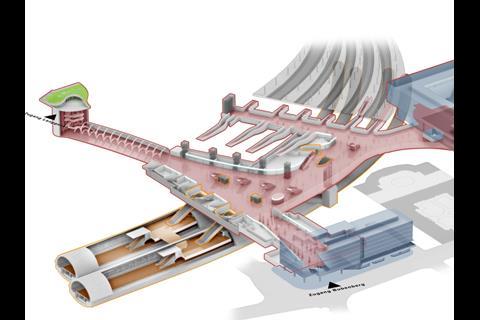SWITZERLAND: A long-discussed project to expand the main station in Bern was officially launched on July 3, following completion of the planning approval process on June 26. The Zukunft Bahnhof Bern project is intended to provide much-needed capacity increases in several areas, as both the SBB through station and the adjacent terminus for regional metre-gauge operator RBS are reaching their limits.
Barbara Egger-Jenzer, Construction, Traffic & Energy Director for Canton Bern, welcomed the start of the ‘urgently needed expansion’ after 10 years of planning.
The first stage to be completed by 2025 will see the construction of a new deep-level terminus for RBS services in a pair of tunnels below tracks 2 to 7 of the SBB station. With two large island platforms, it will replace the current low-level station built in the 1960s, which is struggling to cope with ridership that has increased from 19 000 to 60 000 passengers/day.
The ‘bigger, lighter and friendlier’ RBS platforms will be linked to an underground concourse connecting with the existing station subway and a new Central Underpass providing exits to both Länggasse and Bubenbergplatz; SBB expects to start work on this in November. At the same time, the city of Bern will rearrange traffic flows around the station to accommodate greater numbers of pedestrians, improving connections to and from tram and bus services while segregating vehicular traffic.
Estimated cost of the first phase is put at around SFr1bn. Of this, the RBS deep level station is priced at SFr614m (±10%), to which the federal government will contribute SFr450m and Canton Bern SFr164m. The federal government is also contributing SFr121m towards the SFr360m cost of the station concourse expansion, with the remainder shared between the canton and the city. The SFr93m for reconfiguring the traffic flows around the station will be co-financed by the federation through the so-called third-generation agglomeration programme.
The second phase is expected to follow around 2035. This would see the construction of four additional tracks for main line services alongside the current SBB station, to accommodate more S-Bahn, regional and long-distance services. The expansion would take place within the STEP framework (Strategic Development Programme for Railway Infrastructure) being co-ordinated between the Federal Office of Transport, the cantons and the railway operators, and is not expected to be completed before 2040 at the earliest.








































